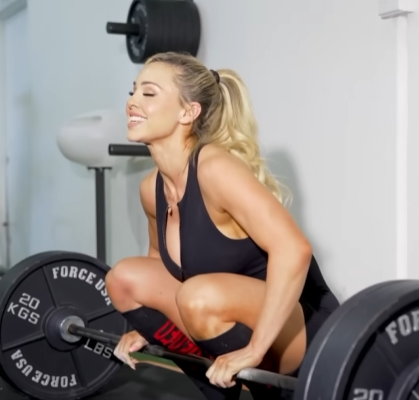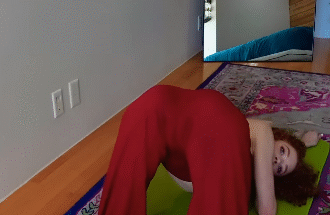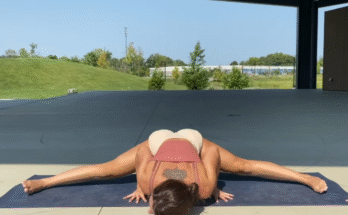
Lifting heavy is an art and science combined. If you’re looking to perfect your sumo deadlift and push your limits to 150kg (330lbs), this guide will take you through the essential techniques, training strategies, and mindset required to conquer this strength milestone. Whether you’re a powerlifter, a strength athlete, or simply looking to build overall power, the sumo deadlift is an excellent lift for developing the posterior chain while reducing strain on the lower back compared to the conventional deadlift.

Why the Sumo Deadlift?
The sumo deadlift is a variation of the traditional deadlift where you take a wider stance and keep your hands inside your knees. This setup offers several benefits:
- Reduced Lower Back Stress: The upright torso position reduces the load on the lumbar spine, making it a great option for those with lower back concerns.
- More Leg Drive: A wider stance allows for greater engagement of the quads, glutes, and adductors.
- Shorter Range of Motion (ROM): This can lead to lifting heavier weights more efficiently, as the bar doesn’t travel as far compared to a conventional deadlift.
- Increased Hip Strength: The sumo stance heavily recruits the hip abductors and external rotators, essential for overall lower-body power.

Perfecting Your Sumo Deadlift Technique
Before attempting 150kg (330lbs), it’s crucial to ensure your technique is flawless. Here’s a step-by-step breakdown:
1. Setting Up Your Stance
- Stand with your feet wider than shoulder-width apart, toes pointed out at about a 45-degree angle.
- The barbell should be positioned over your mid-foot (not too close or too far away).
- Keep your shins close to the bar but avoid excessive contact.
2. Grip and Positioning
- Take a double overhand grip or a mixed grip (one palm facing you, one palm facing away) inside your knees.
- Engage your lats by pulling your shoulder blades slightly down and back.
- Keep your chest up and your back straight, ensuring a neutral spine.
3. The Pull
- Brace your core and take a deep breath before initiating the lift.
- Push through your heels, engaging your quads and glutes.
- Maintain an upright chest position and keep the bar close to your body.
- Fully extend your hips and lock out at the top, squeezing your glutes.
4. The Descent
- Control the weight back down by hinging at the hips first.
- Lower the bar close to your body while maintaining a strong core.
- Reset and prepare for the next rep.
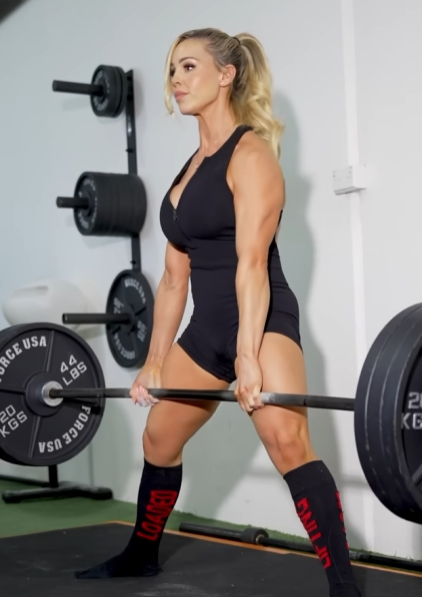
Building Up to 150kg / 330lbs
Reaching 150kg requires a combination of progressive overload, accessory work, and strategic recovery. Here’s how you can structure your training to hit this milestone:
1. Strength Progression Plan
- Start with a Solid Base: If your current max is around 100kg, aim to progressively increase your working sets each week.
- Follow a Periodized Program: Cycle through phases of hypertrophy (8-12 reps), strength (4-6 reps), and power (1-3 reps).
- Increase Load Gradually: Add 2.5-5kg per week to avoid plateaus and reduce injury risk.
- Use Percentage Training: Work with 70-85% of your 1RM for volume, then 90-95% for heavy singles.
2. Accessory Exercises for a Bigger Pull
Strengthening key muscle groups will improve your sumo deadlift dramatically:
- Deficit Sumo Deadlifts (3×8) – Improve strength off the floor by standing on a raised platform.
- Pause Sumo Deadlifts (3×5) – Pause just off the ground to build positional strength.
- Hip Thrusts (4×10) – Develop glute power for a strong lockout.
- Good Mornings (3×12) – Strengthen the posterior chain and lower back stability.
- Bulgarian Split Squats (3×10 each leg) – Improve quad and glute balance.
- Sumo Stance Box Squats (4×6) – Reinforce hip engagement in the sumo position.
3. Deadlift Frequency and Volume
- Train sumo deadlifts 2x per week, incorporating both heavy and volume days.
- Allow at least 48 hours of recovery between deadlift sessions.
- Include speed work at lighter weights (60-70% 1RM) to improve explosiveness.
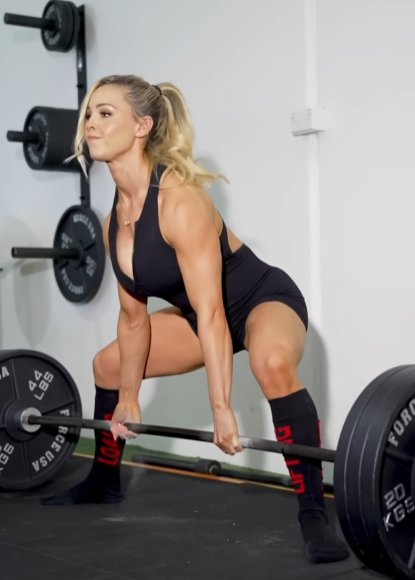
Common Mistakes and How to Fix Them
Even experienced lifters can run into issues when lifting heavy. Here are the most common mistakes and how to address them:
1. Hips Rising Too Fast
- Problem: If your hips shoot up before your chest, the lift turns into a conventional deadlift, reducing efficiency.
- Fix: Focus on pushing through the legs and keeping the chest lifted.
2. Rounding the Back
- Problem: A rounded spine increases injury risk and weakens the lift.
- Fix: Strengthen your core and lats; ensure proper bracing before pulling.
3. Bar Drifting Away from the Body
- Problem: A bar that isn’t close to the body creates unnecessary strain on the lower back.
- Fix: Keep your lats engaged and cue yourself to “drag the bar up your legs.”
4. Weak Lockout
- Problem: Struggling to complete the lift at the top.
- Fix: Incorporate hip thrusts, block pulls, and banded deadlifts to strengthen the lockout phase.
Mental and Recovery Strategies
Lifting 150kg requires not just physical strength but also mental toughness and proper recovery strategies:
1. Mindset & Visualization
- Approach each heavy lift with confidence.
- Visualize yourself successfully completing the lift before stepping up to the bar.
- Use cues like “explode off the floor” and “drive hips through.”
2. Nutrition & Recovery
- Protein Intake: Aim for 1.6-2.2g per kg of bodyweight for muscle repair.
- Hydration: Drink plenty of water and consider electrolytes for optimal muscle function.
- Rest Days: Prioritize sleep (7-9 hours per night) and mobility work.
- Active Recovery: Use light stretching, yoga, or foam rolling to reduce stiffness.
Final Thoughts
Hitting a 150kg (330lbs) sumo deadlift requires dedication, technique refinement, and strategic programming. By progressively building strength, focusing on accessory work, and maintaining proper recovery, you’ll be able to reach and surpass this milestone. Remember, the journey is just as important as the goal—train smart, stay consistent, and enjoy the process of getting stronger!
